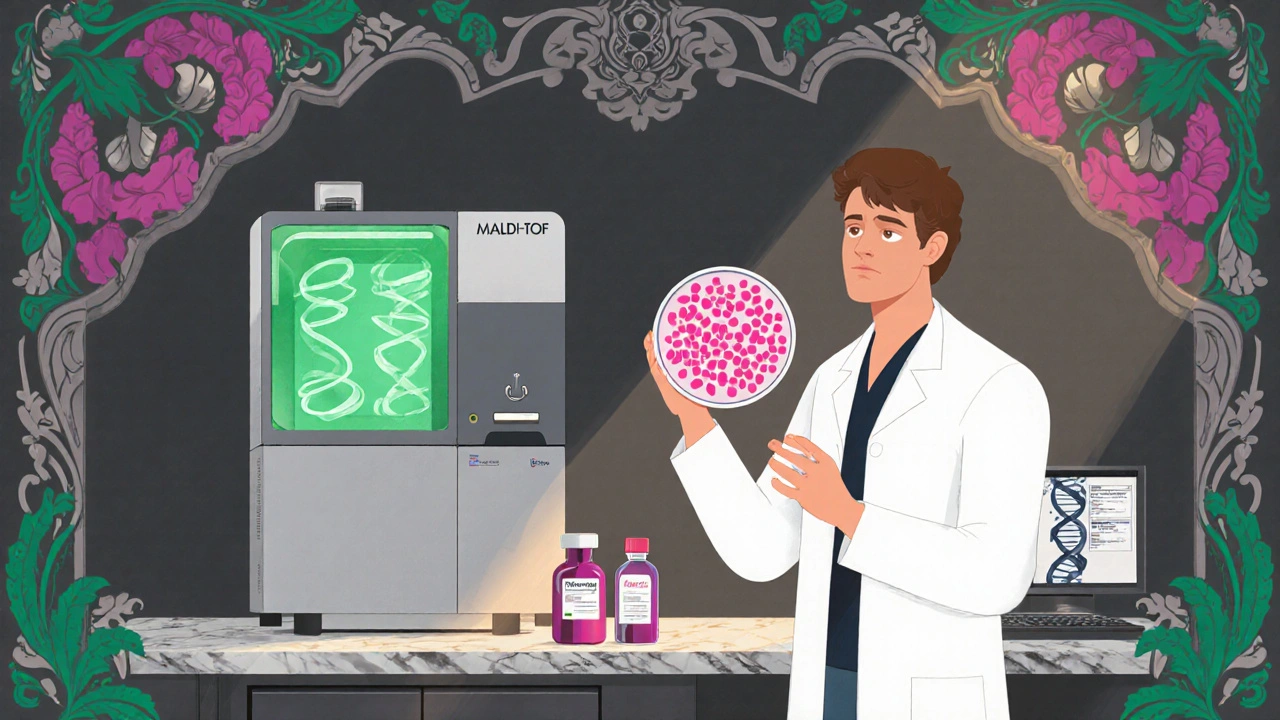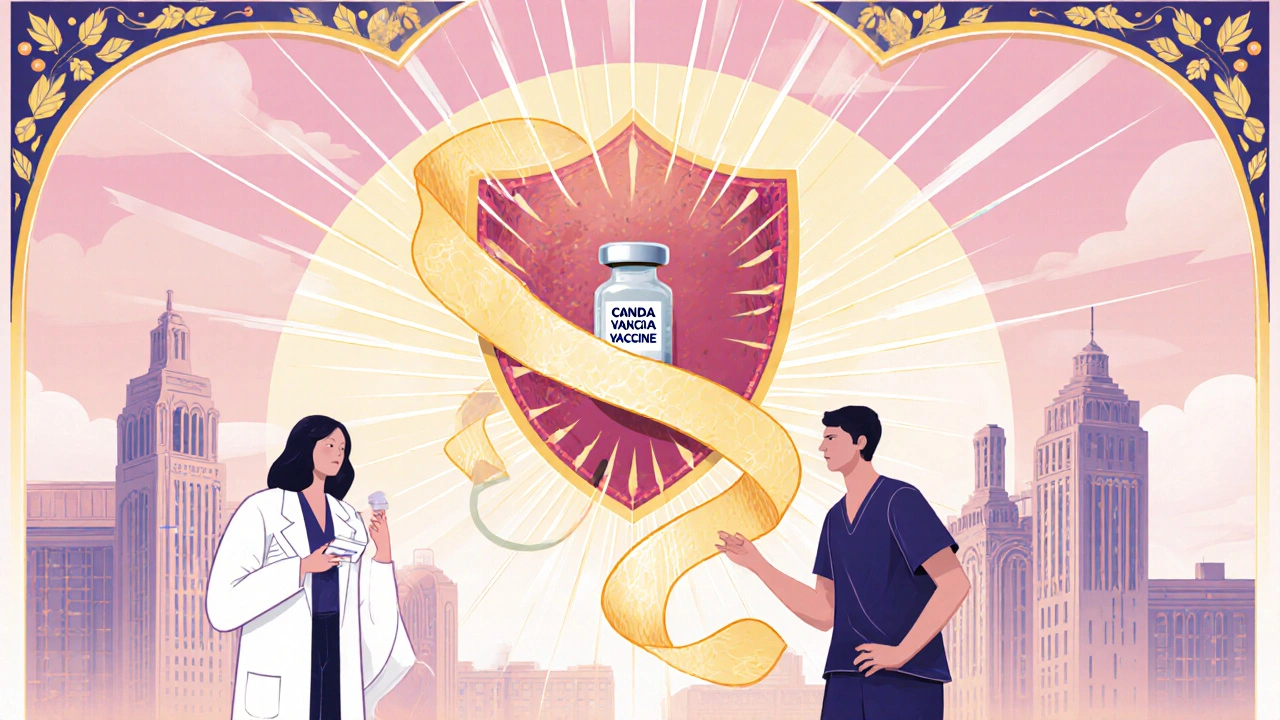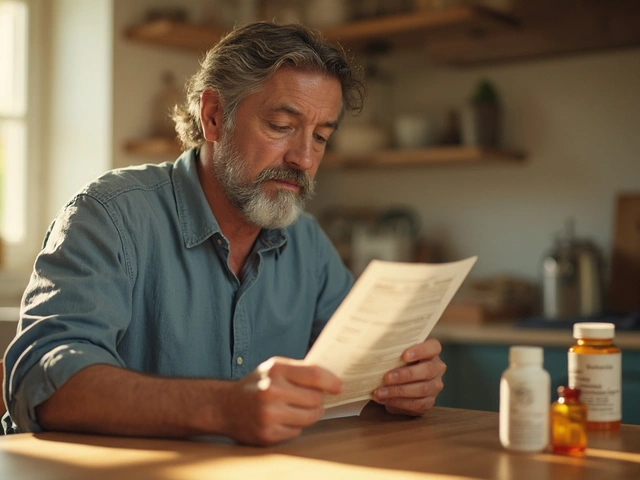Transplant Candidemia Mortality Risk Calculator
Patient Risk Assessment
Risk Factors
Transplant Type: Higher risk for heart/lung transplants (41-45% mortality)
Time Since Transplant: Highest risk in first 3 months
Central Line: Primary entry point for Candida
ICU Stay >7 days: Increases risk of colonization
Therapy Delay: 10% mortality increase per 24 hours
Colonization: 40% higher infection risk
Risk Assessment Results
Key Takeaways
- Both candidemia and disseminated Candida infection dramatically raise mortality and graft‑loss rates in transplant patients.
- Risk spikes during the first three months post‑transplant when immunosuppression is highest.
- Early blood‑culture diagnosis and prompt, appropriate antifungal therapy cut 90‑day mortality by up to 30%.
- Targeted prophylaxis (fluconazole or echinocandins) is most effective in high‑risk kidney and liver recipients.
- Multidisciplinary monitoring-clinical, microbiological, and therapeutic drug‑level checks-offers the best chance to protect the graft.
When a transplanted patient develops a bloodstream infection caused by Candidemia is the presence of Candida species in the blood, often signaling a deeper, systemic spread, the stakes are high. The infection can stay confined to the bloodstream or become a Disseminated Candida Infection that seeds the kidneys, eyes, liver, or central nervous system. For organ transplant recipients-people already walking a thin line between preventing rejection and avoiding infection-these fungi can mean the difference between a successful graft and a life‑threatening setback.
Why Transplant Recipients Are Especially Vulnerable
Immunosuppressive regimens are the backbone of transplant medicine. Drugs like tacrolimus, mycophenolate, and high‑dose steroids blunt the immune system just enough to keep the organ from being rejected, but they also impair the body’s natural defenses against yeast. This Immunosuppression reduces neutrophil function, hampers T‑cell responses, and alters gut flora, creating an environment where Candida can thrive.
Other risk enhancers include:
- Prolonged central venous catheters (the most common portal for Candida entry).
- Broad‑spectrum antibiotics that wipe out competing bacteria.
- Pre‑existing colonization of the gastrointestinal tract with Candida species.
- Renal replacement therapy, especially in liver and pancreas recipients.
Clinical Picture: From Fever to Multi‑Organ Failure
Early signs are deceptively vague-fever, chills, and a sudden rise in inflammatory markers. In disseminated disease, patients may develop:
- Renal lesions visible on ultrasound.
- Visual disturbances from chorioretinitis.
- Neurological signs if the brain is involved.
Because transplant patients often have overlapping complications (e.g., rejection episodes, drug toxicities), clinicians must keep a high index of suspicion. Delayed diagnosis adds days to the time to effective therapy, and each 24‑hour delay can increase 30‑day mortality by roughly 10%.

Diagnosing the Enemy
Blood cultures remain the gold standard, but their sensitivity hovers around 50‑70% for Candida. Newer methods-matrix‑assisted laser desorption/ionization time‑of‑flight (MALDI‑TOF) and polymerase chain reaction (PCR) panels-cut identification time from days to hours. When a transplant recipient presents with fever of unknown origin, a Candida Blood Culture should be drawn before any antifungal is started to avoid false‑negative results.
Imaging (CT, MRI) helps locate deep‑seated foci, especially in the abdomen, spleen, and brain. If an abscess is identified, percutaneous drainage plus targeted antifungal therapy is recommended.
Impact on Outcomes: Mortality, Graft Loss, and Cost
Multiple multicenter studies from 2018‑2024 show a stark picture:
| Transplant Type | 30‑Day Mortality | Graft Loss |
|---|---|---|
| Kidney | 28% | 18% |
| Liver | 35% | 22% |
| Heart | 41% | 30% |
| Lung | 45% | 34% |
| Hematopoietic Stem Cell | 38% | 25% |
These numbers illustrate that candidemia is not a uniform threat; the heart and lung transplants carry the highest mortality, while kidney recipients fare slightly better-but even the lowest rate (28%) is far above the 10‑15% seen in non‑transplant ICU patients.
Therapeutic Arsenal: Choosing the Right Antifungal
Initial therapy should be broad enough to cover the most common species-Candida albicans, C. glabrata, and C. tropicalis. The current standard of care recommends an echinocandin (caspofungin, micafungin, or anidulafungin) for the first 48‑72 hours, then de‑escalation based on susceptibility.
When a Fluconazole is used as step‑down therapy for susceptible isolates, therapeutic drug monitoring (TDM) helps avoid sub‑therapeutic levels, especially in patients with liver dysfunction.
For fluconazole‑resistant species, high‑dose echinocandins or the newer variant, rezafungin, are preferred. Liposomal amphotericin B remains a rescue drug for patients who fail first‑line therapy but carries significant nephrotoxicity-an especially concerning side effect in kidney transplant recipients.
Duration of therapy typically spans 14‑21 days after the first negative culture and clinical resolution, but disseminated disease involving the CNS or eyes may require 6‑12 weeks of treatment.

Prophylaxis: Preventing the Infection Before It Starts
Prophylactic strategies vary by organ type and local epidemiology. A 2022 meta‑analysis showed that:
- Fluconazole prophylaxis in liver transplant patients reduced candidemia incidence from 12% to 4%.
- Echinocandin prophylaxis in high‑risk lung transplants lowered breakthrough infection rates to under 2%.
Key factors for deciding prophylaxis include:
- Duration of ICU stay (>7 days).
- Presence of a central line.
- Colonization status on surveillance cultures.
A Antifungal Prophylaxis protocol should be individualized, balancing drug toxicity, cost, and resistance risk. Regular reassessment every 2‑4 weeks helps discontinue therapy once risk subsides.
Future Directions: From Biomarkers to Vaccines
Research is moving toward earlier detection. Serum (1→3)-β‑D‑glucan (BDG) testing shows promise: a level >80 pg/mL predicts candidemia with 85% sensitivity in transplant cohorts. Combining BDG with PCR panels could shave off critical hours.
Vaccination remains experimental, but a phase‑II trial of a recombinant Candida adhesin vaccine reported a 40% reduction in invasive infections among kidney recipients. If larger trials confirm safety, vaccination could become a standard pre‑transplant preparation.
Finally, stewardship programs that integrate infectious disease specialists, pharmacists, and transplant surgeons are proving effective. Hospitals that instituted a dedicated antifungal stewardship team saw a 22% drop in inappropriate echinocandin use without compromising outcomes.
Quick Checklist for Clinicians
- Maintain high suspicion for candidemia in any transplant patient with unexplained fever within the first 90 days.
- Obtain blood cultures BEFORE starting antifungal therapy.
- Start an echinocandin empirically; de‑escalate based on susceptibilities.
- Consider fluconazole prophylaxis for liver and high‑risk kidney transplants.
- Monitor drug levels for fluconazole and adjust for liver/kidney function.
- Re‑image if the patient fails to improve after 48-72 hours of therapy.
- Engage a multidisciplinary team early-infectious disease, transplant surgery, pharmacy.
What is the difference between candidemia and disseminated Candida infection?
Candidemia refers specifically to Candida species detected in the bloodstream. Disseminated Candida infection means the fungus has spread beyond the blood to organs such as the kidney, eye, brain, or liver.
Which transplant recipients are at the highest risk?
Heart and lung transplant patients carry the highest 30‑day mortality, largely because they receive the most intense immunosuppression and often have prolonged ventilator support.
How soon should antifungal therapy be started after a positive blood culture?
Therapy should begin as soon as candidemia is suspected, ideally within the first 6 hours of culture collection. Delays beyond 24 hours are linked to higher mortality.
Is fluconazole still effective against most Candida species?
Fluconazole works well against C. albicans and C. tropicalis, but resistance is rising in C. glabrata and C. krusei. Species‑level identification guides whether fluconazole can be used.
What role does β‑D‑glucan testing play in early detection?
Serum (1→3)-β‑D‑glucan is a non‑specific fungal marker. In transplant patients, a level above 80 pg/mL has about 85% sensitivity for candidemia and can trigger earlier empiric therapy while waiting for cultures.







Joanne Ponnappa
October 22, 2025 AT 18:50Great summary, very helpful 🤗
Emily Collins
October 27, 2025 AT 08:57Wow, this article just blew my mind! The sheer complexity of candidemia in transplant patients is mind‑boggling, and I can’t help but feel a rush of awe. It’s like watching a high‑stakes drama unfold in an ICU, complete with suspense, danger, and heroic interventions. The details about early diagnosis and prophylaxis are absolute gold.
Rachael Turner
November 1, 2025 AT 00:04Transplant recipients live with a delicate balance between preventing rejection and fighting infection. Candida species exploit that imbalance with ruthless efficiency. The presence of a central line offers a direct highway for the fungus to enter the bloodstream. Immunosuppressive drugs blunt neutrophil activity and T‑cell responses. Broad‑spectrum antibiotics wipe out bacterial competitors and open niches for yeast growth. Early signs such as fever are nonspecific and can be mistaken for other post‑operative complications. Blood cultures remain the diagnostic cornerstone despite their limited sensitivity. New molecular methods promise faster identification but are not yet universally available. Antifungal therapy must start quickly to improve outcomes. Echinocandins provide broad coverage while awaiting susceptibilities. Fluconazole can be stepped down for susceptible strains but requires therapeutic drug monitoring. Prophylactic strategies differ by organ type and patient risk profile. Liver and lung transplants face the highest mortality rates in candidemia. Multidisciplinary teams improve survival by coordinating care and monitoring drug levels. Ongoing research into biomarkers and vaccines offers hope for future prevention.
Suryadevan Vasu
November 5, 2025 AT 15:10Immunosuppression impairs neutrophil function and T‑cell response. Central venous catheters serve as the primary portal for Candida entry. Prompt echinocandin therapy followed by susceptibility‑guided de‑escalation reduces mortality.
Vin Alls
November 10, 2025 AT 06:17Picture this: a fresh‑cut kidney graft, a patient on high‑dose steroids, and an unwelcome Candida invader slipping through a lingering catheter. The infection can quickly turn the triumph of transplantation into a race against time. Early blood‑culture collection is like striking the first chord in a symphony of rescue, guiding us to the right antifungal melody. Echinocandins burst onto the stage with broad‑spectrum vigor, then fluconazole steps in gracefully once sensitivities are known. Remember, diligent therapeutic drug monitoring keeps the harmony, preventing toxic side‑effects while preserving the graft’s rhythm.
Don Goodman-Wilson
November 14, 2025 AT 21:24Because everyone totally needs a dramatic soap‑opera recap of a medical review, right?
John Connolly
November 19, 2025 AT 12:30While the tone may be flamboyant, the underlying data remain clinically significant and warrant careful attention.
Benedict Posadas
November 24, 2025 AT 03:37Thats a solid breakdown 🙌 but i think u could add more about the 𝘣𝘥𝘨 test its pretty cool 😅 also watch out for the typo's lol
Jai Reed
November 28, 2025 AT 18:44Implementing a structured antifungal stewardship program can cut inappropriate echinocandin use by over 20 % while maintaining patient outcomes, a win‑win for both safety and cost.
Sameer Khan
December 3, 2025 AT 09:50The stewardship initiative aligns with antimicrobial governance frameworks, optimizing pharmacokinetic/pharmacodynamic target attainment and mitigating selective pressure that drives azole‑resistance phenotypes in transplant cohorts.
Tim Blümel
December 8, 2025 AT 00:57Seeing the data laid out like this really underlines how crucial early detection is 🕵️♂️. It’s encouraging that BDG testing is gaining traction as a rapid adjunct-every hour saved can translate to lives saved. The push for vaccine trials also gives the community a hopeful horizon; imagine a future where a pre‑transplant inoculation could shave years off post‑operative morbidity. Keep sharing these updates, they fuel our collective vigilance 😊.
Iris Joy
December 12, 2025 AT 16:04Absolutely, the momentum in biomarker research and vaccine development is a beacon for transplant teams. By integrating BDG assays into routine surveillance, we can stratify risk earlier and tailor prophylaxis more precisely. Moreover, multidisciplinary education ensures that surgeons, pharmacists, and nurses all speak the same language when reacting to early signals. Let’s keep the conversation going and push for broader implementation across centers.
Sarah Riley
December 17, 2025 AT 07:10The article sugar‑coats the mortality figures; the reality is far grimmer.
Diane Thurman
December 21, 2025 AT 22:17maybe you should check your facts first lol